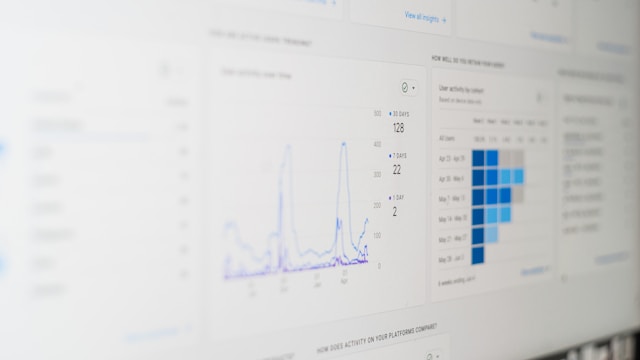Remote work creates distance not just in location but in visibility. You can’t rely on gut instinct to know who’s focused or where progress is stalling. That’s why forward-thinking teams are turning to monitoring data, not to tighten control but to fuel smarter coaching.
This article explores strategies to help you use monitoring data for better coaching, clearer priorities, and stronger team performance. A tool designed for the monitoring of employees in the workplace gives you the insight to make that shift with confidence.
When Visibility Feels Like Pressure Instead of Support
Monitoring without the right structure can come across as a spotlight, showing activity but offering no real guidance. What’s meant to support can start to feel like surveillance.
It’s no surprise that 18% of workers report feeling stressed or anxious when they know they’re being monitored, and 16% say they take fewer breaks because of it.
To turn that around, you first need to understand what’s causing that shift in tone and impact:
- Unclear Priorities: Time gets spent, but not always on what matters most.
- Micromanagement Pressure: Without context, every check-in risks feeling like a status check.
- Missed Coaching Moments: Early signs of burnout or disengagement often go unnoticed.
- Reactive Decision-Making: Lack of live data slows you down and leads to surface-level feedback.
How to Turn Monitoring Data Into a Coaching Advantage
The real opportunity with monitoring data isn’t tracking hours but using those insights to coach with purpose and clarity. When used right, it shifts leadership from guesswork to insight-driven action.
Use these tactics to coach more effectively, reinforce accountability, and stay aligned without monitoring every minute:
1. Clarify Priorities With Data-Backed Conversations
Use monitoring data to spot where time is going and compare it to your remote and hybrid teams’ priorities. Look for mismatches between effort and goals. Too much time in admin tools or messaging apps often means core work is being sidelined.
Review weekly time breakdowns and adjust workloads where needed. Shift responsibilities if someone is stuck in low-impact tasks. Keep the focus on what drives results, not what fills the day.
How can platforms for employee monitoring in the workplace align time with goals?
Platforms for employee monitoring in the workplace map hours by tool, task, or category so you can quickly compare effort against team priorities.
You might notice team members spending too much time in documentation tools and not enough in project boards. That’s a signal to refocus on delivery.
2. Focus Coaching on Outcomes, Not Hours
Track outcomes over time to understand what’s moving the work forward. Focus less on who’s online and more on who’s consistently delivering results. This approach builds trust while keeping expectations clear.
Review patterns in task completion and output quality. If someone finishes high-priority work in fewer hours, recognize that as efficiency, not underperformance. Coach around what’s effective, not what fills the day. Let results, not hours, set the tone for performance feedback.
How can tools for monitoring of employees support performance-based coaching?
Tools for monitoring of employees show how focused time translates into outcomes over days or weeks, giving you a better sense of what supports high performance.
One team member could log fewer hours yet consistently complete tasks ahead of deadline, highlighting the impact of quality over quantity.
3. Spot the Early Signs of Burnout
Watch for early signs of burnout in your remote team’s behavior patterns. Sudden drops in output, increased idle time, or irregular work hours often point to overload.
Use monitoring data to spot these shifts quickly. A spike in late-night logins or disappearing focus time is your signal to step in. Don’t wait for someone to speak up. Check in, ask what’s getting in the way, and adjust workload if needed. Acting early keeps burnout from becoming a bigger issue.
How can software for monitoring employee workload help prevent burnout?
Software for monitoring employee workload highlights patterns like irregular schedules, missed breaks, or extended working hours so you can step in early. A team member logging in every evening after hours may need support with workload or help setting clearer boundaries.
4. Use Patterns to Guide, Not Punish
Spot patterns that point to what’s working, then share them. When remote and hybrid teams see real examples of effective habits, it’s easier to raise the bar together without adding pressure.
Surface trends at the group level to build new norms or reinforce strong ones. If a smaller team is producing more with fewer meetings, highlight it and explore why.
Keep the focus on improvement, not control. Let the data shape better decisions, smoother workflows, and habits the whole team can get behind.
How can employee monitoring software reinforce positive team habits?
Insightful employee monitoring software tracks consistent habits that lead to strong output, making it easier to identify what’s working.
A team might review weekly dashboards together and see that reduced meeting days correlate with more completed tasks, prompting a shift toward deeper focus blocks.
5. Strengthen Coaching with Smart Tools
A monitoring tool gives you more than just activity stats. When used with the right intent, it helps you guide performance, support growth, and stay aligned without overstepping.
Here’s how a monitoring tool turns data into a coaching advantage:
- Behavior Trends: Shows patterns over time, so you can coach based on consistency rather than isolated moments.
- Focus Visibility: Helps you understand when your team does their best work, making it easier to support deep work instead of interrupting it.
- Effort-to-Outcome Mapping: Connects time spent with actual results, helping you give feedback rooted in performance, not presence.
- Self-Awareness Features: Allows your team to view their own data, so coaching becomes a shared process instead of a one-sided evaluation.
Conclusion
Using monitoring data the right way helps you shift from tracking activity to driving impact. The monitoring software connects daily work to performance, without compromising trust.
When your remote team sees that data is used to support, not control, you unlock stronger alignment and lasting results.





